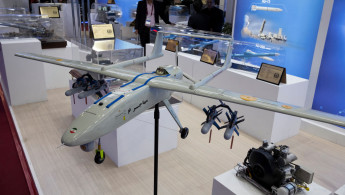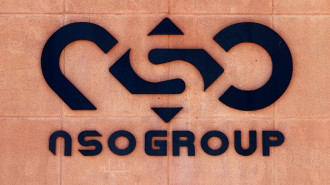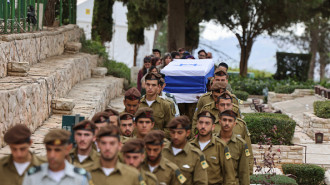Explainer: How Iran launched and expanded its drone program
In 1984, when Iran's Islamic Revolutionary Guard Corps (IRGC) began developing its first basic drones, no one could foresee the deployment of the latest generation of those UAVs in a military confrontation between world powers in the 2022 war in Ukraine.
However, Iran's foreign ministry officials have denied sending drones to Russia during the Ukraine war, Ayatollah Ali Khamenei, the country's Supreme Leader, tacitly accepted that Iranian drones were in the hands of the Russian army.
"Now they [the West] say Iranian drones are very dangerous, and they complain why we sold the drones to this person or gave it to that person. This is what the Iranian elite has developed and has brought pride to the country," Khamenei said on 19 October.
Cooperation between Tehran and Moscow over Iran's drone program is not limited to recent months. In July 2017, the then-director of Iran's Aviation Industries Organization, General Abdol Karim Bani Tarafi, said the first Iranian drones were exported to Russia.
Since then, Russia has been the primary client for a military UAV program that Iran has been developing for about four decades. Ten years ago, this program was ridiculed as a work of photoshop, but later on, it proved deadly for the region and beyond.
First motivations for the drone program
According to reports by the state-run media, IRGC commanders decided to build the first Iranian drones in 1984 when they could no longer deploy American McDonnell Douglas RF-4 jets planes for surveillance.
Before the 1979 collapse of Iran's last king, the Shah, Iran's air force was equipped with US warplanes and British detection systems. But after the revolution, Western powers put sanctions on Iran's military forces.
Four years after the beginning of the Iran-Iraq war (1980-88), Iran's official army, Artesh, could no longer replace the needed spare parts for the warplanes. So the IRGC commanders decided to use cheap and simple drones to take frontline photos.
Apart from a drone program, US sanctions became the main inspiration for the Islamic Republic to manufacture suicide speed boats on the seas and design a cruise missile program.
Iran's first drones were equipped with the Swiss ALPA 110 and 135 cameras and only deployed for surveillance operations. Later, a new generation of basic drones was developed called Talash, with 120 kilometres per hour speed and 45 minutes of flying.
Mohajer, another Iranian drone, was developed at the end of the Iran-Iraq war, and is also used by Hezbollah in Lebanon.
After the war's end, Iran remained under international sanctions. While the country's official army could not upgrade its air force, the IRGC continued developing new combat, surveillance and suicide aerial vehicles.
Iran's drone arsenal
Iran's suicide drones have come to the centre of attention in the past weeks because of the reports about their use in the Ukraine war. Shahed 136, with a delta-wing shape, is said to be deployed by Russia to attack targets in Ukraine.
This drone can carry a 30 to 40-kilogram bomb in a range of about 2,000 kilometres. Before Ukraine, Shahed 136 was used as a cruise missile in Yemen when the Houthis attacked oil plants and targets in Saudi Arabia.
Iranian authority has never officially revealed the price of Shahed 136. However, military experts' estimation indicates that the UAV costs between US$20,000 and US$30,000. This is a low price compared to the Turkish BT2 drones, which cost about US$5m. The US RQ-4A Global Hawk that IRGC downed in 2019 was about US$220m.
Shahed 136 can be launched from the back of a truck, but what makes them deadly is the strategy that IRGC has invented in deploying multiple of these flying machines simultaneously to make their interceptions difficult for air defence systems. IRGC uses the same approach with its suicide speed boats in the Persian Gulf.
Before Ukraine and Yemen, Iranian drones were deployed in Syria during the country's 11-year-long civil war. Ababil 3 was the unmanned aerial vehicle Iran sold to Syria during the war.
Ababil 3 was a multifunctional low-technology drone used for surveillance, combat and suicide attacks. These drones were deployed during the Syrian Civil war to target forces fighting against the Assad regime.
On 25 October, local Iranian media published unconfirmed reports about Moscow's interest in purchasing Arash 2 drones, which are technologically more developed than Shahed 136.
Arash 2 was first tested in a drill in September when the commander of Iran's official army ground forces Brigade General Kioumars Heydari said Arash 2 was a precision-strike drone Iran had invented to attack Haifa and Tel Aviv.
Recently, the IRGC has unveiled a new generation of suicide drones that can be launched from a backpack carried by its personnel. But, so far, no accurate information has been made available on how these drones, called Meraaj 521, would function in an actual combat situation.
The IRGC-affiliated Tasnim news agency published photos of these drones during last week's military drill near the Azerbaijan border, saying the drone could fly between five and 15 minutes in a range of five kilometres.
The exact number of military UAVs in Iran's arsenal is still shrouded in secrecy and the IRGC has attempted to add to this secrecy for propaganda purposes. However, sanction-hit Iran has undeniably turned its unsophisticated drone technology into a lucrative source of income in recent years.





 Follow the Middle East's top stories in English at The New Arab on Google News
Follow the Middle East's top stories in English at The New Arab on Google News


